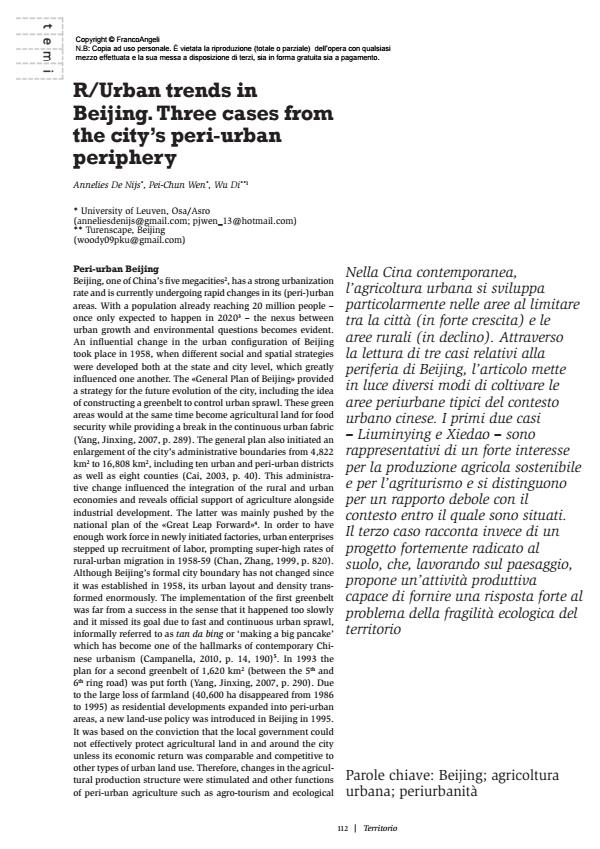R/Urban trends in Beijing. Three cases from the city’s periurban periphery
Journal title TERRITORIO
Author/s Annelies De Nijs, Pei-Chun Wen, Wu Di
Publishing Year 2012 Issue 2012/60
Language English Pages 5 P. 112-116 File size 385 KB
DOI 10.3280/TR2012-060020
DOI is like a bar code for intellectual property: to have more infomation
click here
Below, you can see the article first page
If you want to buy this article in PDF format, you can do it, following the instructions to buy download credits

FrancoAngeli is member of Publishers International Linking Association, Inc (PILA), a not-for-profit association which run the CrossRef service enabling links to and from online scholarly content.
In contemporary China, the evolution of productive land is related to specifi c government policies and the changing spatial conditions of the nation. Urban agriculture is particularly developed in the friction area between the (ever growing) urban and (threatened) rural territories. Different ways of cultivating the peri-urban areas are described in the paper, through the exploration of three cases of urban agriculture in Beijing. Whereas the fi rst two - Liuminying and Xiedao - show a major concern for sustainable production and agro-tourism, with a less embedded relationship with their respective contexts, the Taihu project is more rooted to its locale and provides a strong answer to the ecological sensitivity of the site. It can be argued that the Taihu case study exemplifi es an alternative to China’s ever-booming amount of and seemingly randomly placed agro-tourism sites.
Keywords: Beijing; urban agriculture; peri-urban
Annelies De Nijs, Pei-Chun Wen, Wu Di, R/Urban trends in Beijing. Three cases from the city’s peri-urban periphery in "TERRITORIO" 60/2012, pp 112-116, DOI: 10.3280/TR2012-060020